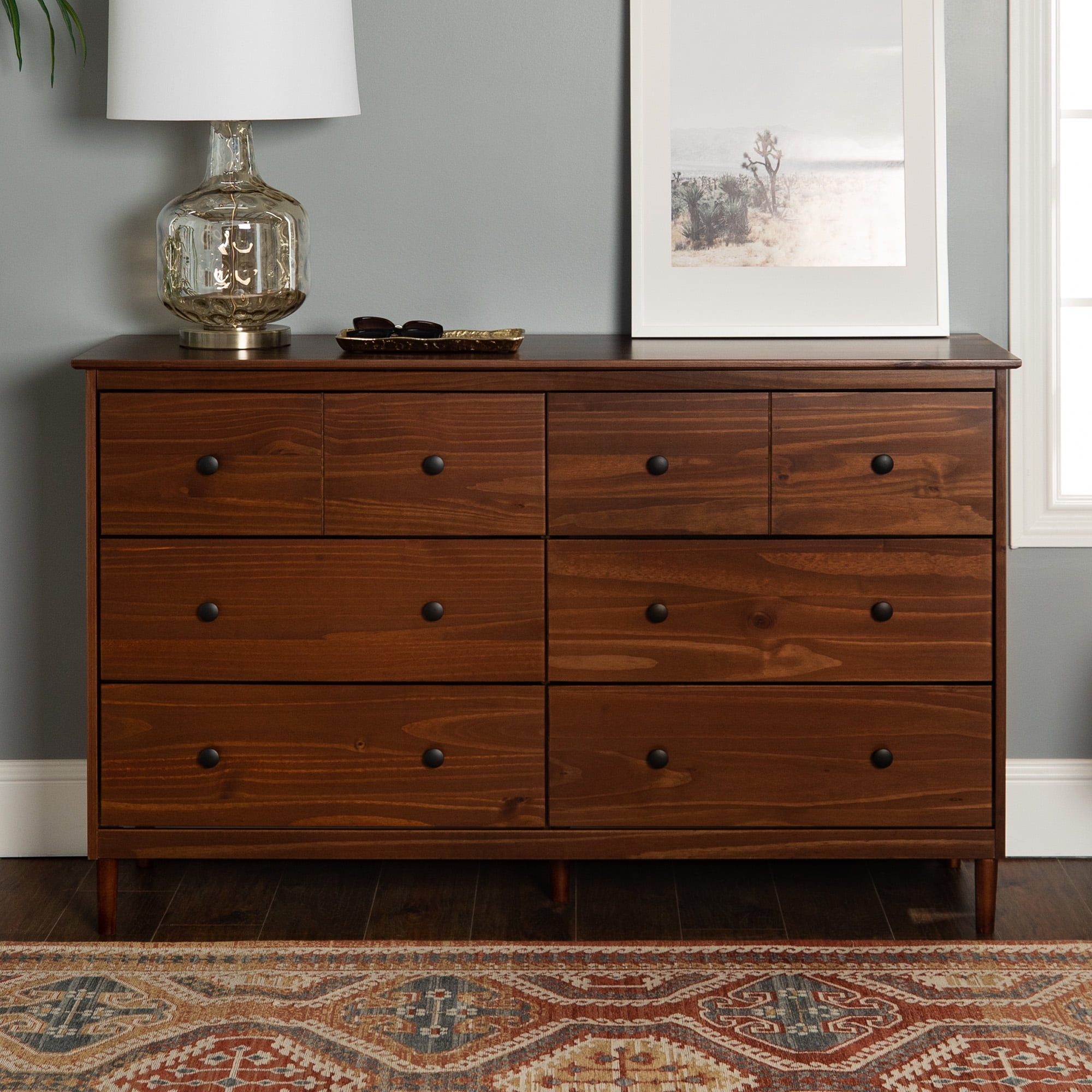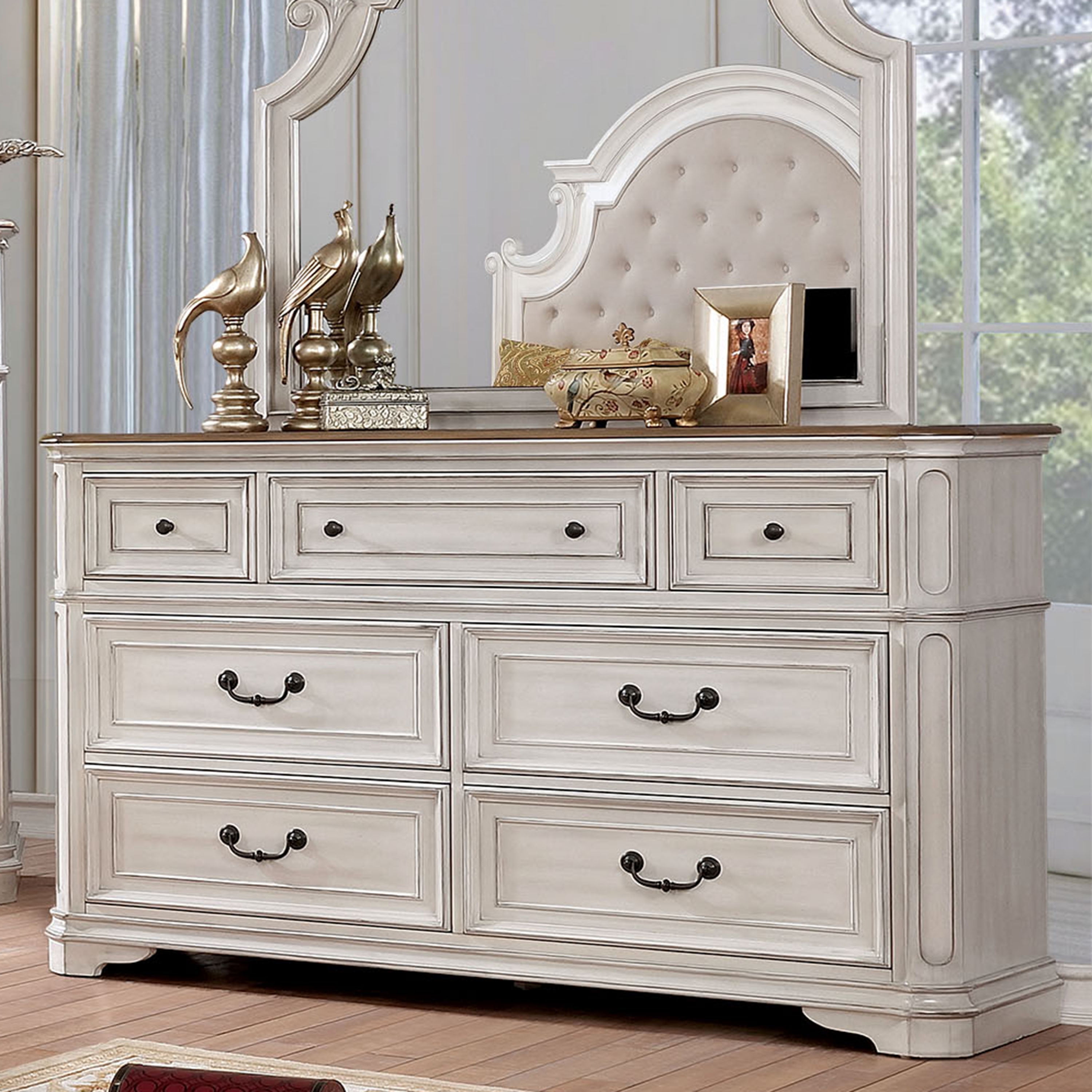Choosing the Right Wood Dresser for Your Bedroom

A dresser is a staple piece of bedroom furniture that offers both functionality and style. When selecting a dresser, the type of wood is a crucial factor that influences its durability, aesthetic appeal, and overall feel. Understanding the various wood types and their characteristics can help you make an informed decision that aligns with your preferences and needs.
Wood Types and Their Characteristics
The type of wood used for a dresser significantly impacts its durability, color, grain patterns, and overall aesthetic. Here are some common wood types and their notable features:
- Oak: Oak is a durable hardwood known for its strength, resistance to scratches, and rich, warm color. It exhibits prominent grain patterns, adding a rustic and classic charm to dressers. Oak dressers are often found in traditional and farmhouse styles.
- Cherry: Cherry wood is prized for its beautiful reddish-brown hue, which deepens over time, creating a rich patina. It is a relatively hard wood, making it durable and resistant to scratches. Cherry dressers are often found in traditional and contemporary styles.
- Maple: Maple wood is known for its smooth, even grain and light, creamy color. It is a hard and durable wood that is resistant to dents and scratches. Maple dressers are often found in modern and contemporary styles, where their clean lines and subtle grain patterns create a minimalist aesthetic.
- Walnut: Walnut wood is a luxurious hardwood known for its rich, dark brown color and distinctive, intricate grain patterns. It is a strong and durable wood that is resistant to scratches and dents. Walnut dressers are often found in traditional and contemporary styles, adding a touch of elegance and sophistication to any bedroom.
Dresser Styles and Design Elements
Dresser styles can vary widely, ranging from classic traditional designs to sleek modern aesthetics. Here are some popular dresser styles and their defining design elements:
- Traditional: Traditional dressers often feature ornate carvings, intricate details, and a classic, timeless appeal. They are typically made from hardwoods like oak, cherry, or walnut, and often have a rich, warm finish.
- Modern: Modern dressers are characterized by clean lines, simple forms, and a minimalist aesthetic. They are often made from lighter woods like maple or birch, and have a sleek, contemporary finish. Modern dressers typically lack intricate details and ornamentation.
- Farmhouse: Farmhouse dressers embrace a rustic and charming aesthetic. They are often made from reclaimed wood, with a distressed finish and visible knots and grain patterns. Farmhouse dressers typically feature simple designs with a focus on functionality and practicality.
Choosing the Right Dresser Size and Configuration
The size and configuration of your dresser should be carefully considered to ensure it fits comfortably in your bedroom and meets your storage needs. Here are some factors to keep in mind:
- Bedroom Dimensions: Measure the available space in your bedroom before selecting a dresser. Consider the width, depth, and height of the dresser to ensure it fits comfortably without feeling cramped or overwhelming.
- Storage Needs: Determine the number of drawers you require based on the amount of clothing and other items you need to store. Consider the size of each drawer and the overall storage capacity of the dresser.
- Configuration: Dressers come in various configurations, including traditional double dressers with multiple drawers, chests with fewer drawers, and vanity dressers with a mirror and additional storage space. Choose a configuration that best suits your needs and preferences.
Features and Functionality of Wood Dressers: Wood Dressers For Bedroom

Wood dressers are more than just furniture; they are functional pieces that help organize your bedroom and enhance its aesthetic appeal. Choosing the right dresser involves considering various features that cater to your specific needs and preferences. Let’s explore the essential elements that contribute to a dresser’s functionality.
Drawers, Shelves, and Mirrors, Wood dressers for bedroom
Drawers are the heart of a dresser, providing ample storage space for clothes, accessories, and other personal belongings. The number of drawers, their size, and their configuration are crucial considerations. A standard dresser typically features between 3 to 6 drawers, but some models offer more for extra storage.
Shelves, while less common in dressers, can be valuable for storing items that don’t fit in drawers, such as folded sweaters or hats. A shelf above the drawers provides additional space for displaying decorative items or showcasing your favorite accessories.
Mirrors are often incorporated into dressers, offering convenience for getting ready in the morning. A mirror attached to the dresser can save space and provide a stylish touch to the bedroom.
Drawer Glides and Construction Techniques
The smooth operation and durability of a dresser hinge on the quality of its drawer glides and construction techniques.
- Drawer Glides: High-quality drawer glides ensure effortless opening and closing, preventing sticking or jamming. Common types include ball-bearing glides, roller glides, and side-mounted glides. Ball-bearing glides are known for their smooth operation and durability, while roller glides are often preferred for their quietness.
- Construction Techniques: The construction technique employed in a dresser significantly impacts its longevity. Dovetail joints, known for their strength and durability, are commonly used for drawer construction. Mortise-and-tenon joints, another robust technique, are often found in the dresser’s frame. Solid wood construction is generally preferred for its durability and resistance to warping.
Built-in Organizers and Dividers
Built-in organizers and dividers enhance a dresser’s functionality by creating compartments within drawers, allowing for efficient storage and organization. These features promote orderliness and prevent clothes from becoming tangled or crushed.
- Organizers: Organizers come in various forms, including trays, baskets, and drawer inserts. Trays can be used to separate jewelry, socks, or underwear, while baskets provide a convenient way to store bulky items like sweaters or scarves. Drawer inserts can be customized to create compartments for specific items, such as shirts, pants, or folded towels.
- Dividers: Dividers create vertical compartments within drawers, allowing for better organization of clothes and preventing them from sliding around. Dividers can be adjustable to accommodate different drawer sizes and can be used to separate items by category or color.
Styling and Incorporating a Wood Dresser into Your Bedroom

A wood dresser isn’t just about storage; it’s a statement piece that sets the tone for your entire bedroom. The right dresser can elevate your space from ordinary to extraordinary, reflecting your personal style and creating a cozy haven you’ll love to come home to.
Matching Wood Dresser Styles with Bedroom Aesthetics
Choosing the right wood dresser style can significantly impact the overall aesthetic of your bedroom. Consider the following table to see how different wood dresser styles complement various bedroom themes:
| Wood Dresser Style | Best-Suited Bedroom Aesthetic | Mid-Century Modern | Minimalist, Scandinavian, Contemporary | Rustic | Farmhouse, Bohemian, Industrial | Traditional | Classic, Victorian, French Country | Contemporary | Minimalist, Modern, Industrial | Transitional | Eclectic, Modern Farmhouse, Coastal |
|---|
Incorporating a Wood Dresser into Different Color Palettes and Themes
A wood dresser’s natural warmth and versatility allow it to seamlessly integrate into a wide range of color palettes and bedroom themes. Here are some ideas:
* Neutral Color Palettes: A light wood dresser complements a neutral color palette, adding a touch of warmth and texture. Consider pairing it with soft creams, grays, and whites.
* Bold Color Palettes: A dark wood dresser adds depth and sophistication to a bold color palette. Pair it with rich jewel tones like emerald green, sapphire blue, or ruby red.
* Minimalist Themes: A sleek, modern wood dresser with clean lines and minimal embellishments enhances a minimalist bedroom’s clean and uncluttered aesthetic.
* Bohemian Themes: A rustic wood dresser with intricate carvings or distressed finishes adds a touch of bohemian charm to a space.
* Classic Themes: A traditional wood dresser with intricate details and a polished finish complements a classic bedroom theme.
Choosing the Right Lighting and Accessories
Lighting and accessories can elevate your wood dresser from a functional piece to a focal point.
* Lighting:
* Overhead Lighting: A chandelier or pendant light above your dresser adds a touch of elegance.
* Table Lamps: A pair of table lamps on either side of the dresser provides ample reading light and adds a cozy ambiance.
* Accent Lighting: A small accent lamp placed behind the dresser creates a dramatic effect and highlights its details.
* Accessories:
* Mirrors: A mirror above the dresser reflects light, making the space feel larger and brighter.
* Artwork: A framed print or painting above the dresser adds a personal touch and complements the bedroom’s overall theme.
* Vases and Plants: A vase filled with fresh flowers or a potted plant adds a touch of life and color.
* Decorative Boxes and Trays: Use decorative boxes and trays to organize and display small items, adding visual interest.
